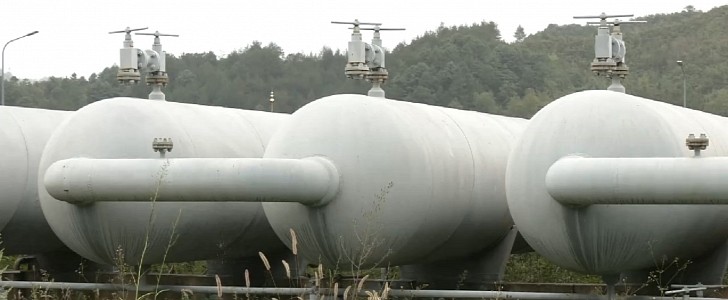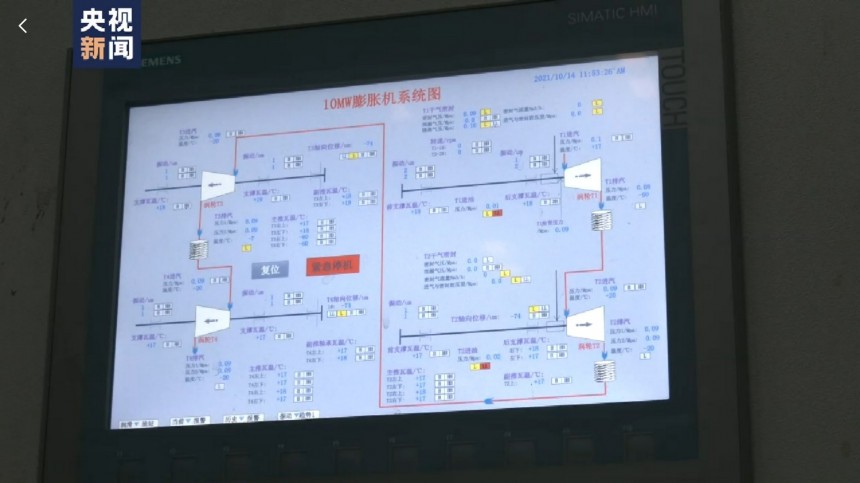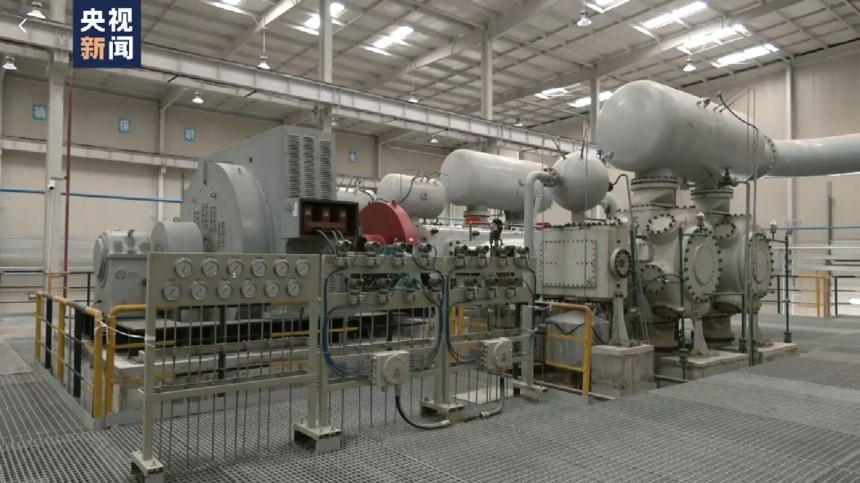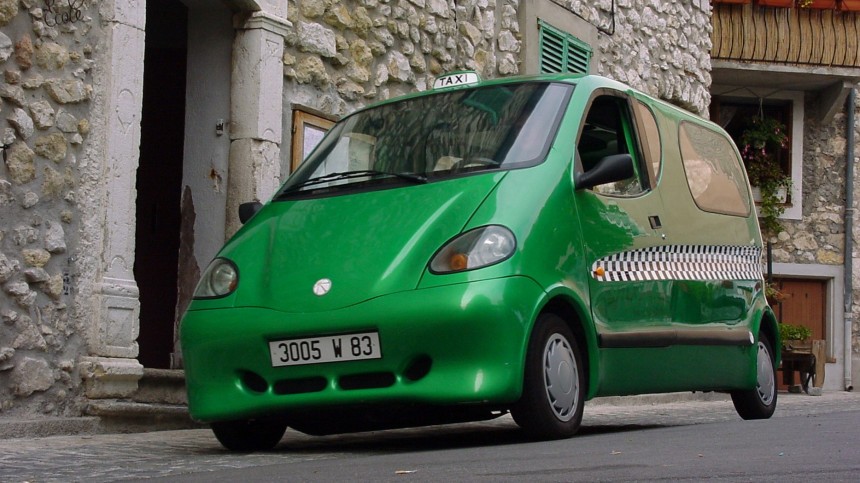Around 2008, a French engineer made the headlines with the idea of manufacturing a car that could run on compressed air. Guy Nègre had conceived the CAT (Compressed Air Technology) Air Car. We remembered his story after reading a CNEVPost article on China’s new solution for storing energy: compressed air.
CCTV went to China’s first compressed-air energy storage facility to show what it proposes to do. Instead of using increasingly precious and expensive lithium-ion batteries, the plant uses cheap energy to compress air in huge tanks. Its official name is quite long: National Energy Large-Scale Physical Energy Storage Technology Research and Development Center.
When there’s peak demand for electricity, and prices get higher, the unusual energy storage facility uses that air to propel turbines and generate power. According to CCTV, the facility can deliver up to 40 MWh of energy per day, enough to power 3,000 houses.
An Hai, the plant director, told the Chinese network that the secret to economically viable is to compress the air when energy prices are low and make this air generate electricity when energy rates are higher.
CCTV describes this strategy as if the plan was to use it with any means of producing electricity and eventually mentions that it can avoid wasting electricity produced by renewable energy sources. Ironically, this may be the main application of such a solution instead of the mega batteries used in Australia and California.
Solar and wind power are more potent in moments of the day when energy consumption is not that high. However, the electricity surplus that these methods generate is wasted if you do not have a way to store it. At first, the logical choice was to use batteries, but only because nobody came up with a better idea until now.
Currently, there is no better way to store energy than batteries in terms of energy efficiency. However, it takes time to charge them and energy release is not very fast. Moreover, CCTV did not mention how efficient it is to compress air and turn it into electric energy. Still, the speed factor may favor the method China is testing with this new energy storage facility.
The engineers that have developed it say that they allow solar and wind power plants not to be directly connected to the grid, which helps to stabilize them. According to them, it can be applied on a large scale, with low costs and a long lifespan. Batteries have a limited number of cycles and are in high demand by electric vehicles.
Guo Wenbin, an engineer at the Institute of Engineering Thermophysics, also stressed that they are a safe way to store energy. In his words, there is no risk of sudden explosion because the air pressure remains in the medium-range, with controllable risks. After the fire on the Victorian Big Battery, that may be a convincing argument.
If this energy station proves to work as expected, we may soon have more batteries for electric cars. The plan was always to have them for energy storage only when they are no longer suitable for automotive applications. In other words, they would only help to stabilize the power grid as used components that could still do some work before being recycled.
A welcome secondary effect would be to propel Nègre’s idea to use compressed air on vehicles as well. Tata Motors wanted to mass-produce the CAT Air Car, which was renamed Tata OneCAT. It was supposed to reach production by 2020, but it still did not happen.
Apart from its partnership with Tata, CAT became MDI (Motor Development International), a company that did not give up making compressed-air engines take off. It even developed the AIRPod, a vehicle we talked about back in 2012.
If the company ever manages to mass-produce its idea, that’s sadly something Nègre will not watch: he died on June 24, 2016. His son, Cyril Nègre, is currently MDI’s CEO, and he is still trying to make that work. May he make his father proud, wherever he is.
When there’s peak demand for electricity, and prices get higher, the unusual energy storage facility uses that air to propel turbines and generate power. According to CCTV, the facility can deliver up to 40 MWh of energy per day, enough to power 3,000 houses.
An Hai, the plant director, told the Chinese network that the secret to economically viable is to compress the air when energy prices are low and make this air generate electricity when energy rates are higher.
Solar and wind power are more potent in moments of the day when energy consumption is not that high. However, the electricity surplus that these methods generate is wasted if you do not have a way to store it. At first, the logical choice was to use batteries, but only because nobody came up with a better idea until now.
Currently, there is no better way to store energy than batteries in terms of energy efficiency. However, it takes time to charge them and energy release is not very fast. Moreover, CCTV did not mention how efficient it is to compress air and turn it into electric energy. Still, the speed factor may favor the method China is testing with this new energy storage facility.
Guo Wenbin, an engineer at the Institute of Engineering Thermophysics, also stressed that they are a safe way to store energy. In his words, there is no risk of sudden explosion because the air pressure remains in the medium-range, with controllable risks. After the fire on the Victorian Big Battery, that may be a convincing argument.
If this energy station proves to work as expected, we may soon have more batteries for electric cars. The plan was always to have them for energy storage only when they are no longer suitable for automotive applications. In other words, they would only help to stabilize the power grid as used components that could still do some work before being recycled.
Apart from its partnership with Tata, CAT became MDI (Motor Development International), a company that did not give up making compressed-air engines take off. It even developed the AIRPod, a vehicle we talked about back in 2012.
If the company ever manages to mass-produce its idea, that’s sadly something Nègre will not watch: he died on June 24, 2016. His son, Cyril Nègre, is currently MDI’s CEO, and he is still trying to make that work. May he make his father proud, wherever he is.














